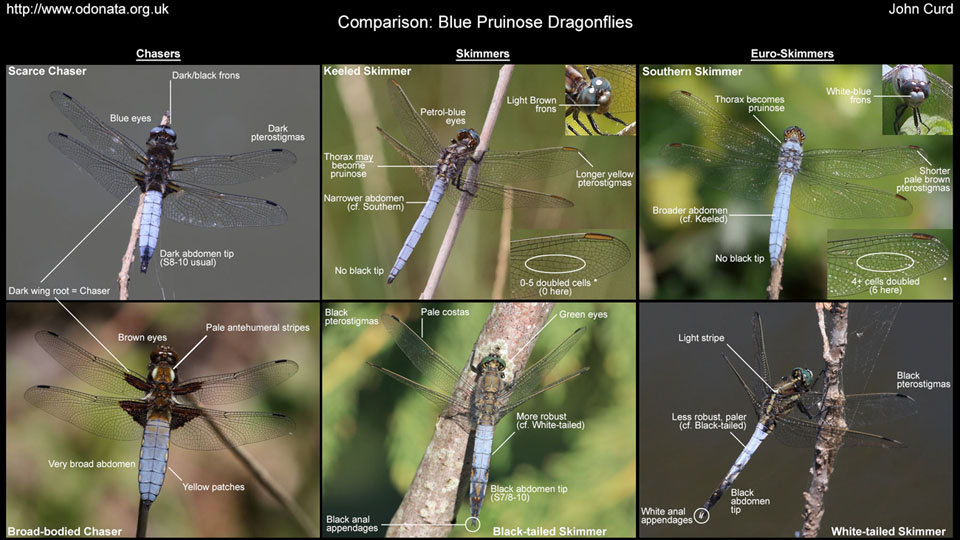Several mature males within the Libellulids develop a powdery blue coating called pruinosity (after the bloom that develops on some prunes); it is actually a waxy deposit. We can’t help referring to these characters as “prunes”, until we’ve identified precisely which prune, of course. 😉
In Europe there are six such potentially confusing species but in the UK we are limited to four, two of which are Chasers and two of which are Skimmers.
- Scarce Chaser (Libellula fulva)
- Broad-bodied Chaser (Libellula depressa)
- Keeled Skimmer (Orthetrum coerulescens)
- Black-tailed Skimmer (Orthetrum cancellatum)
That may change if further northerly migrations occur. This chart includes a couple of potentally confusing French species:
- Southern Skimmer (Orthetrum brunneum) – tricky to differentiate from Keeled Skimmer
- White-tailed Skimmer (Orthetrum albistylum) – looking similar to Black-tailed Skimmer
[In case this diagram proves difficult to read, click to open a larger version.]
- * Doubled cells “subtended by the Rspl”
- Yikes!
- One of the main distinguishing features between O. coerulescens and O. brunneum is the number of doubled cells above the Rspl: O. coerulescens is said to have 0-5 doubled cells, usually less, often zero, whereas O. brunneum is said to have 4 or more doubled cells, usually more (I have examples with 9 & 11). So, it’s awkward because there is overlap in the specification: 4 & 5 doubled cells could be either.

